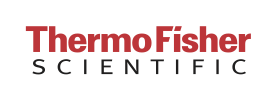
Superior Selectivity in Proteomics
Brought to you by Thermo Fisher Scientific
Overview
The success or failure of many mass spectrometry experiments depends on the ability to reliably detect low-abundance peptides of interest while screening out unwanted noise. High-field asymmetric waveform ion mobility spectrometry (FAIMS) can help users achieve superior selectivity by diverting targeted ions into the MS instrument for analysis, while deflecting away non-target ions that would otherwise generate background interference. This ebook introduces readers to the Thermo Scientificâ„¢ FAIMS Proâ„¢ interface, and explores how various research groups in both academia and industry are making use of this technology in their proteomics work. For example, FAIMS can improve limits of detection in assays designed to detect signature of infection or cancer-related biomarkers, or enable superior quantitation in multiplexed MS experiments performed with isobaric labeling techniques. FAIMS Pro offers a simple and user-friendly means for introducing this powerful additional separation step into proteomics experimental workflows, and we hope that these case studies will inspire even more creative applications of this technique in the MS user community.
Key Learning Objectives
- How FAIMS Pro interface can improve data independent acquisition for phosphopeptide analysis.
- How top down proteomics can utilize orthogonal separation on FAIMS Pro interface for protein analysis.
- How FAIMS Pro interface can increase the number of crosslinked peptide identifications for structural biology applications by enriching for specific precursor charge states.
Brought to you by:


Please complete the form to download the eBook.
Copyright © 2024 American Chemical Society | 1155 Sixteenth Street NW | Washington, DC 20036 | View our Privacy Policy